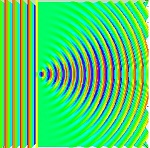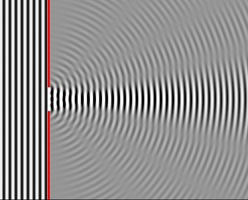If you emit an electromagnetic wave with visible light frequency toward a single or double slit or aperture opening you get an interference pattern that depends on the ratio of the width or radius of the openings and wavelength of the wave in the electromagnetic field.
In cases when you fire single photons like eraser and delayed eraser experiments (whether or not the photons position information is 'exposed' or not) does the detected pattern depend the same way to the relation between the photons wavelength and opening size? Is there a similar relation to the openings size and all bosonic particles, fermionic particles, atoms and molecules minimum uncertainty wave packets size in double and single slit interference experiments?








